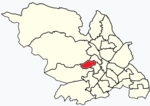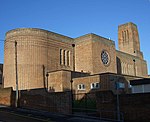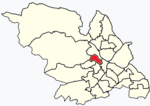Walkley Library
1905 establishments in EnglandCarnegie libraries in EnglandGrade II listed buildings in SheffieldHistory of SheffieldLibrary buildings completed in 1905 ... and 1 more
Public libraries in South Yorkshire

Walkley Library is a public lending library in Walkley, a suburb of the City of Sheffield in England. It stands at the junction of Walkley Road and South Road in one of the busiest parts of the area. It is one of 27 suburban branch libraries within the city. The building is a Carnegie library, the only library in Sheffield to receive Carnegie funding, it is also a Grade II listed building as are the boundary walls and commemorative plaque in front of the library.
Excerpt from the Wikipedia article Walkley Library (License: CC BY-SA 3.0, Authors, Images).Walkley Library
Walkley Road, Sheffield Walkley
Geographical coordinates (GPS) Address Nearby Places Show on map
Geographical coordinates (GPS)
| Latitude | Longitude |
|---|---|
| N 53.394935 ° | E -1.503056 ° |
Address
Walkley Library
Walkley Road
S6 5BU Sheffield, Walkley
England, United Kingdom
Open on Google Maps







